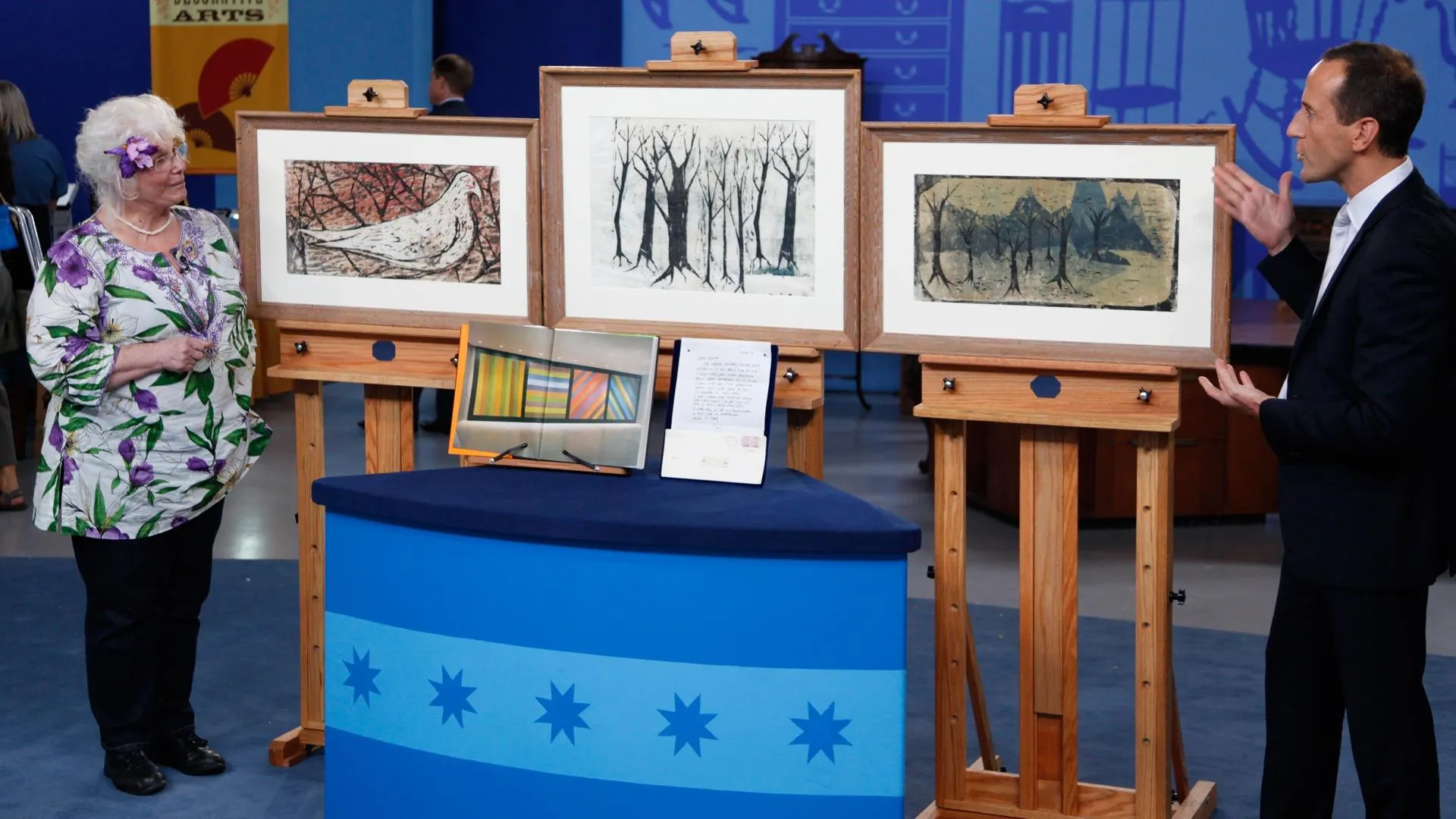GUEST: We call it the green bowl because we don't know anything else about it. It was a gift from a friend who's-- I apologize for giving her age on national TV-- but she's 82. And she knew that I liked all things Chinese and brought it to me and said I should have it. She was given it as a gift by her grandparents. And she said that her grandparents brought it out of China after the war. I don't know which war. My guess would be that it's Peking glass.
APPRAISER: Well, it's a good guess to think that it is Chinese.
GUEST: Oh, okay.
APPRAISER: Mainly because of the design on it, which is a chrysanthemum design. And this was made definitely in the Chinese taste. It was intended to look Chinese.
GUEST: Oh, okay.
APPRAISER: However, it's not. It's actually American.
GUEST: Really?
APPRAISER: It was made in Upstate New York, in Corning, New York, at Steuben. And this is from the Frederick Carder era. And it was probably made somewhere in the late 1920s.
GUEST: Wow.
APPRAISER: It's an acid-cut jade green vase. This is wonderful technique that was made at Steuben. There are two layers of glass. You see how this is so much higher than the layer below?
GUEST: Right.
APPRAISER: And in order to create this design, this is cut away with acid.
GUEST: Oh, okay.
APPRAISER: This weighs quite a bit, actually.
GUEST: Yes, it does.
APPRAISER: It's a very heavy piece. It's not uncommon for this to be unsigned. I looked it up; I found it in the line drawings. It has a shape number, number 607A.
GUEST: Wow.
APPRAISER: And next to it, it says "carved." So it was acid-carved or acid-cut. It's a beautiful example of what they were doing in the 1920s. And today, in a retail shop, this would sell for between $3,000 and $3,500.
GUEST: Wow. (laughs)
APPRAISER: So it's a very nice gift.
GUEST: Yes, it was.



